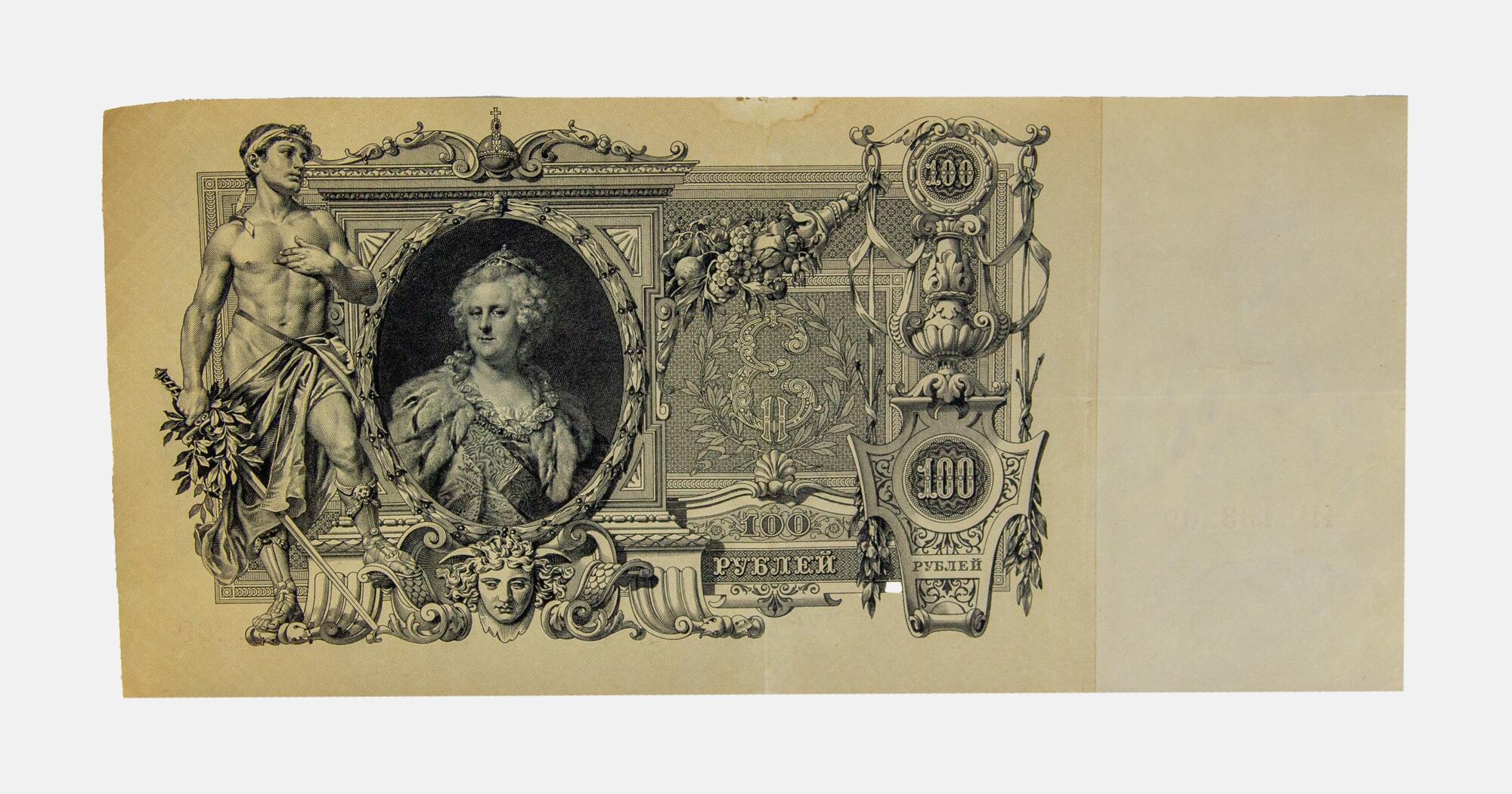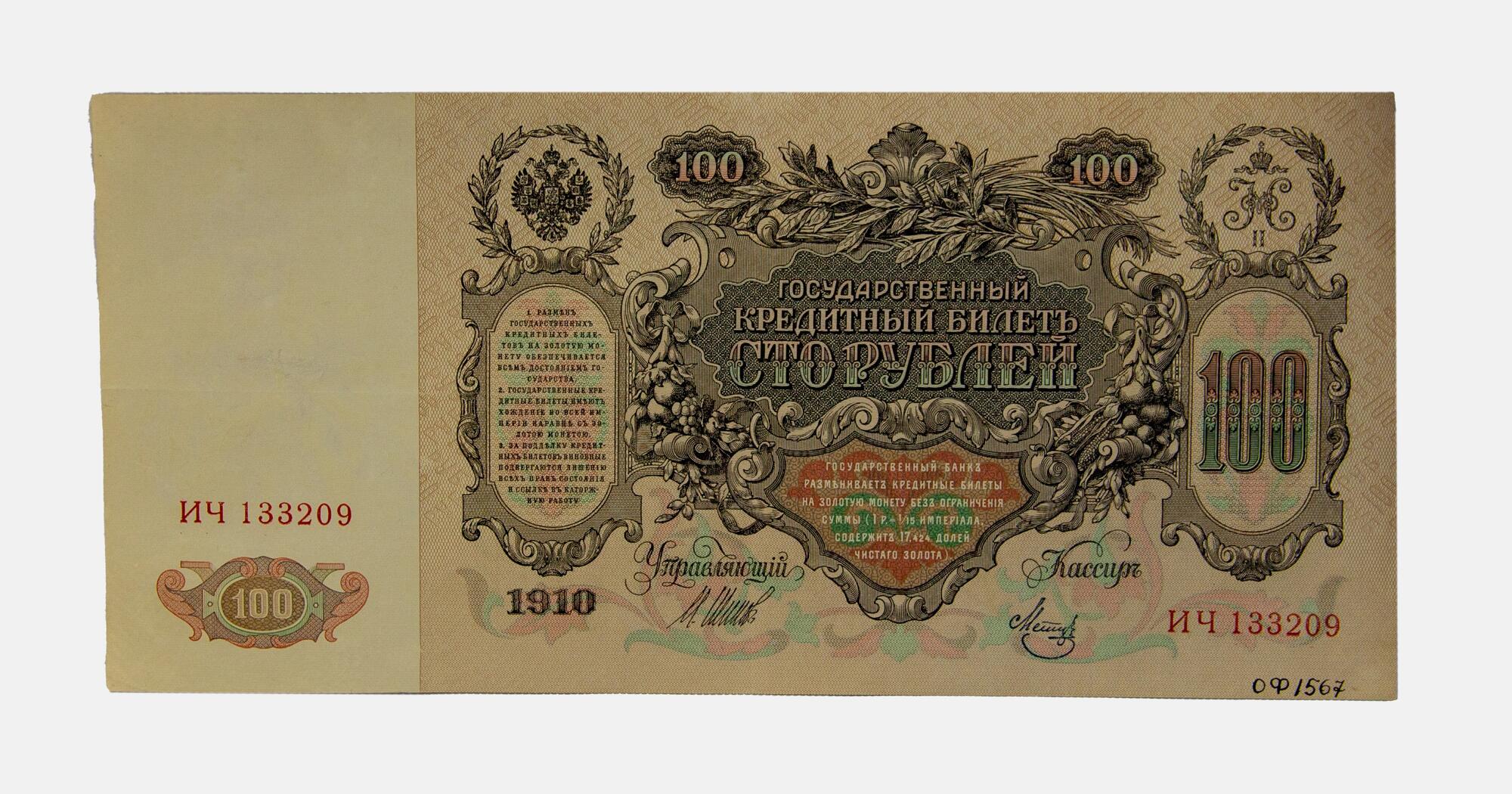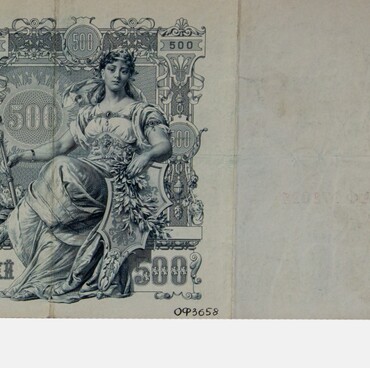Paper money appeared in Russia during the reign of Catherine II. According to the manifesto of the empress, the first Russian banknotes were issued in 1769. Catherine II became the only woman and historical figure whose portrait was depicted on a Russian banknote. For the first time, the portrait of the Empress appeared on the 100 ruble bill which was approved by Alexander II in 1869. In 1898, a new banknote appeared, the Empress was depicted on the banknote twice: first in the form of a portrait made with a metallographic seal, and second in the form of a watermark on a white coupon. The most famous banknote with a portrait of Catherine II was the 1910 bill worth 100 rubles, which entered circulation on October 25, 1911.
The bill was made according to the sketches of two artists — Richard Zarrin (obverse) and Rudolf Ressler (reverse). When working on the image of the Empress, artists and engravers supposedly used the portrait “Catherine II with Allegorical Figures of Fortress and Truth” as the basis. The original painting was created by the Austrian artist Johann Baptist Lampi the Elder in the 1790s. The banknote was printed on paper with a separate watermark (portrait of Catherine II) on a white coupon.
The main color is yellow-beige, which is typical of traditional 100-ruble bills. The design is decorated with black, beige, red and green. The bill’s obverse features a portrait of Catherine II made in an artistic style characteristic of her era. The reverse contains the name, denomination, year, monogram of Nicholas II, the state emblem of the Russian Empire, signatures of the manager and cashier, and the serial number.
Before the First World War, the ruble’s position on the international market was stable. It was backed by gold and had a high solvency. For example, a worker without a family could rent housing in the city for 5–6 rubles, eat in a tavern for 50 kopeks a day, and his salary of 22–25 rubles a month even allowed him to save up some money for a rainy day. In 1913, a very good horse cost 100 rubles; a working dray horse could be bought for 70 rubles. Hence, the 100-ruble bill did not have active circulation among the masses — only among bankers and merchants. Bills with a portrait of Catherine II were issued until 1921 with old pre-revolutionary dates and signatures. Then they were depreciated due to the hyperinflation of the early 1920s. Today the “Katenka” is a rarity and a gem of notaphilist collections.



